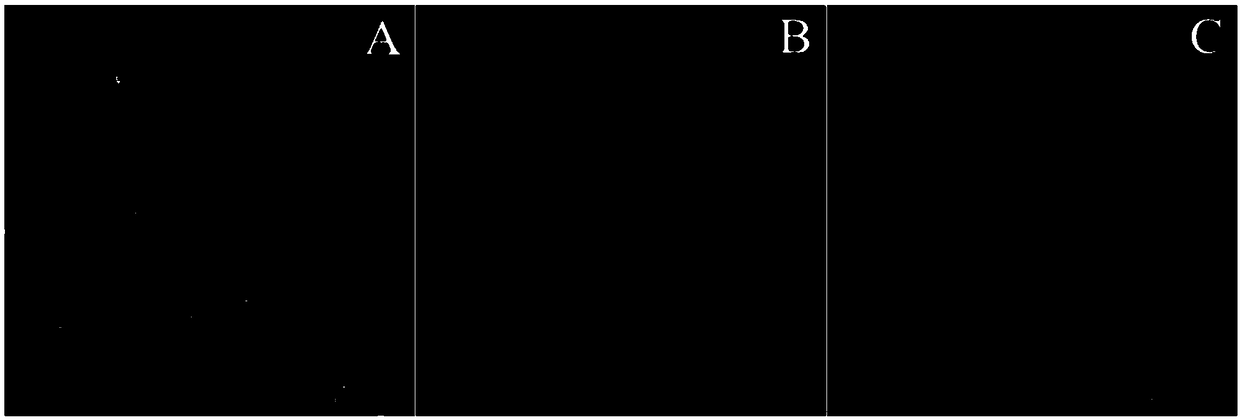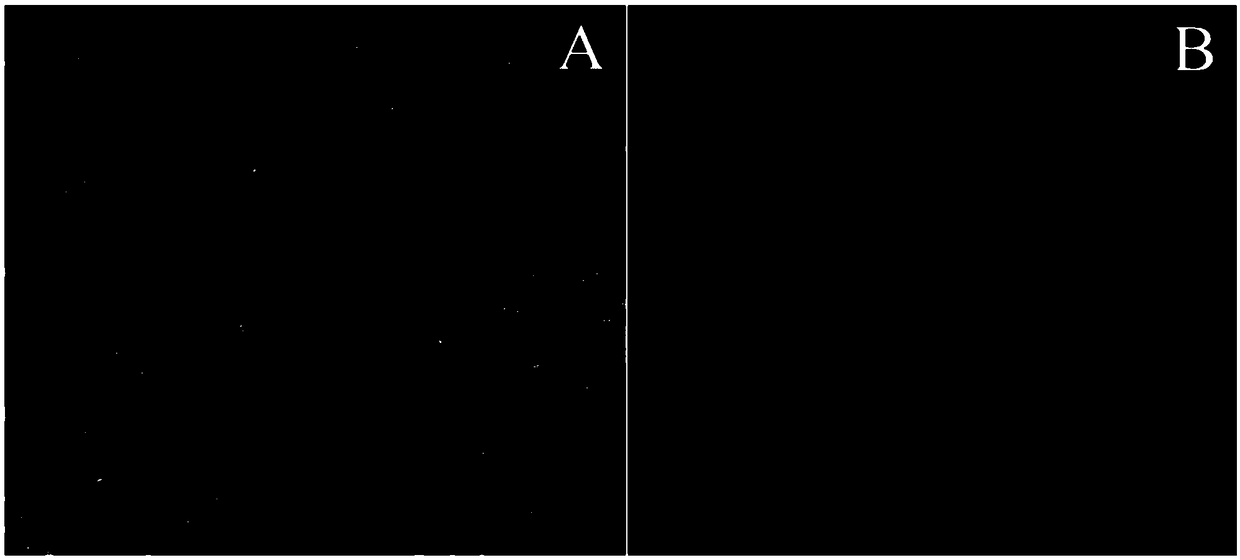Hybridoma cell strain secreting CpHV-1 monoclonal antibodies and application thereof
A monoclonal antibody, hybridoma cell technology, applied in the field of immunization, can solve the problems of long time consumption and easy occurrence of false positives
- Summary
- Abstract
- Description
- Claims
- Application Information
AI Technical Summary
Problems solved by technology
Method used
Image
Examples
Embodiment 1
[0070] The establishment of embodiment 1 monoclonal antibody hybridoma cell line
[0071] 1. Preparation of CpHV-1 antigen
[0072] The inventor isolated a new CpHV-1 domestically prevalent and virulent strain JSHA1405 from sheep with severe respiratory infections (Hao Fei et al., Goat herpesvirus type I vaccine strain and its application [P]. Jiangsu: CN107893056A, 2018 -04-10), there is a large variation between this strain and foreign popular strains. As far as the gB gene is concerned, the foreign popular strain encodes a total of 919 amino acids, while the domestic popular strain JSHA1405gB gene encodes 920 amino acids, and the mutations at 11 amino acid sites. The virus strain was inoculated into 70% confluent MDBK cells (purchased from China Veterinary Drug Administration) at 0.01-0.1 MOI, and placed at 37°C, 5% CO 2 Cell cultures were cultured in a dark place in a cell incubator. Cell cultures were collected 48 hours after inoculation, and the supernatant was obtaine...
Embodiment 2
[0081] The preparation of embodiment 2 ascites
[0082] Inject sterilized liquid paraffin intraperitoneally into 10-12-week-old BALB / c mice (purchased from the Comparative Medicine Center of Yangzhou University), 0.5 mL / mouse, and 7 days later, inject the hybridoma cell line into the peritoneal cavity of mice, each 0.2 mL (including 2×10 6 -3×10 6 hybridoma cells), 7-10 days later, the ascites of the mouse whose abdomen was obviously bulging was collected and centrifuged at 5000rpm for 10min. The supernatant was collected, aliquoted and stored at -20°C for later use.
Embodiment 3
[0083] Example 3 Virus neutralization test
[0084] Ascites prepared from 89 established hybridoma cell lines stably secreting CpHV-1 monoclonal antibody were used for CpHV-1 neutralization test, and hybridoma cell lines secreting high neutralizing titer of monoclonal antibody were further screened. First, measure the TCID of CpHV-1JSHA1405 strain 50 . Using the method of immobilizing virus and diluting antibody, MDBK cells were digested and inoculated in 96-well cell plates. Mix the mouse ascites fluid of each strain of monoclonal antibody diluted 10 times serially with an equal volume containing 200TCID 50 The CpHV-1 suspension was mixed evenly, and reacted at 37°C for 1 hour, and 0.1 mL of the virus-antibody suspension was inoculated in the above-mentioned 96-well cell plate, and CpHV-1 and normal MDBK cell controls were set up, and placed at 37°C , 5%CO 2 Cultivate in the cell incubator, and observe the results after 2 days. Among the 89 CpHV-1-specific monoclonal ant...
PUM
 Login to View More
Login to View More Abstract
Description
Claims
Application Information
 Login to View More
Login to View More - R&D
- Intellectual Property
- Life Sciences
- Materials
- Tech Scout
- Unparalleled Data Quality
- Higher Quality Content
- 60% Fewer Hallucinations
Browse by: Latest US Patents, China's latest patents, Technical Efficacy Thesaurus, Application Domain, Technology Topic, Popular Technical Reports.
© 2025 PatSnap. All rights reserved.Legal|Privacy policy|Modern Slavery Act Transparency Statement|Sitemap|About US| Contact US: help@patsnap.com


